- Updated: December 6, 2023
How to Fix a Slice in Golf
The “Slice,” also known as the ever-dreaded “Big Right Miss,” is either caused by an open club face, an incorrect club path, or a combination of the two that forces the golf ball’s flight to curve towards your dominant side.
A slice causes lost yardage, more lost golf balls, and adds unpredictability to an already “endlessly complicated game.”
Our breakdown today will teach every golfer a few expert tips on what to look for to diagnose your specific version of the slice first, as well as routine maintenance and drills that will help fix your slice forever.

What is a Slice?
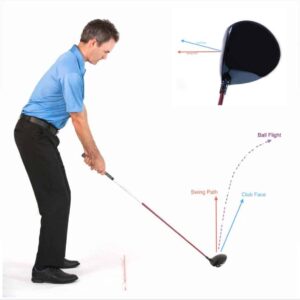
For starters, we must distinguish that there are a few different types of sliced golf shots.
For a right handed player, “Traditional Slice” is a shot that begins left of their target and fades to end up right of their intended destination.
A “Push Slice” is a shot that starts right of the target and keeps going further right, usually out of bounds or into a hazard.
What's Causing My Slice?
Both of the described slice variations above are caused by the same factors, side spin being put on the ball during impact, causing the ball to curve during flight.
The actual root cause of this unwanted side spin is an open clubface at impact.
Multiple slightly uncomfortable-to-fix factors of the golf swing cause this open clubface, including things like an improper setup, grip, and potential swing path. Still, through some range sessions following our tips, you should be able to start hitting the Rory McIlroy “Power Draws” of your dreams.
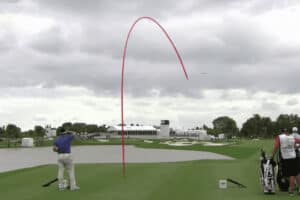
7 Tips to Fix a Slice Forever
Tip #1: Check Your Club Face Angle at Setup/Address
Tip #2: Assess Your Swing Plane – Swing Path
Tip #3: A Weak Grip Leads to a Weak Slice!
Tip #4: Make Sure You Have Proper Alignment (Feet, Hips, Shoulders)
Tip #5: Check and Tweak Your Ball Position
Tip #6: Watch Yourself on Camera For Regular Maintenance (Check Path, Alignment, Weight Transfer, etc.)
Bonus Tip #7: Experiment With These Tips on the Driving Range to Build Confidence
Please keep reading to learn how to diagnose what swing habits are causing your slice and how to fix them going forward.
Tip #1: Check Your Club Face Angle at Setup/Address
Both an open and closed club face at setup can cause a slice for differing reasons. This makes having a relatively square and “neutral” club face to your target at address incredibly important.
An open club face at address (demonstrated by the middle part of the graphic for a right handed golfer) will often cause “hosel-adjacent” misses and high, spinny fades and slices. The good news is this is a very straightforward fix! Try shutting the club face a bit at address and see if your right miss lessens or goes away entirely!
If your club face looks more like the far right part of this graphic when you set up to the ball and you’re still slicing, you likely have a severe “out-to-in” swing path, which we talk about in Tip #2.
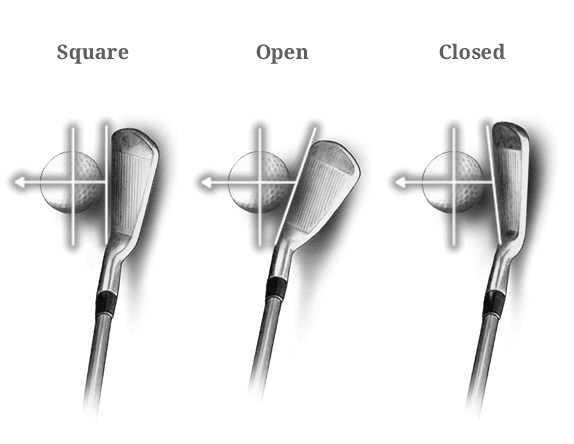
Tip #2: Assess Your Swing Plane - Swing Path
As the helpful video above demonstrates perfectly, it’s incredibly simple to check your swing path using two golf clubs or a club and an alignment stick.
Simply take your regular grip, stance, and set up with your club of choice.
Take an additional club or alignment stick, and place it upside down in your hands along with your club, essentially extending the length of your club’s shaft to 6-7+ feet and back behind your body.
When you begin your backswing and make your hinge to the top, the additional club or alignment stick you’re holding should point directly toward your golf ball. This is the feeling of “swinging on plane.”
If the extra shaft you’re holding points closer toward your feet instead of the golf ball, your swing path is “Steep” (outside/in swing path), and you’re going to slice the ball.
If you have a steep swing, try feeling like you’re hitting the inside corner of the golf ball (closest to you), almost like you’re trying to hit a “push.” This will help you get closer to a straighter ball flight and a square swing plane.
Tip #3: A Weak Grip Leads to a Weak Slice!
A “weak grip,” as we diagnosed in our Strong vs. Weak Grip Breakdown, is when the gloved hand has the grip resting more in its palm with little knuckles showing to the golfer, and the trailing hand is resting firmly on top of the shaft (as demonstrated above).
While a weak grip works for a hooker of the golf ball, it’s a poor grip for someone used to seeing a big slice.
When you have this type of grip, it makes it extremely difficult to make the club return to square to your target at impact, often causing a two-way miss of both hooks (from flipping your hands at impact) and slices from leaving the club face wide open.
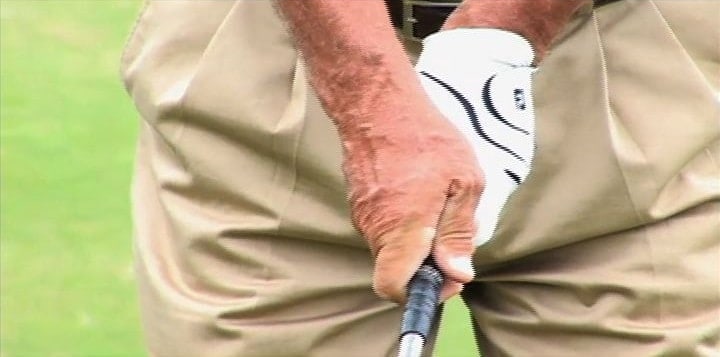
If what we’re describing sounds like your grip, try making sure you can see 2 to 3 knuckles on your lead hand and place your trailing hand more underneath the grip instead of on top of it.
Helpful Hint: The “arrow” created between your thumbs and index fingers should point between your rear shoulder and chin on a good grip. The weak grip above points more towards this golfer’s head or front shoulder, setting them up for disaster!
Tip #4: Make Sure You Have Proper Alignment (Feet, Hips, Shoulders)
Improper alignment is a significant reason for many golfers slicing the ball.
Our photo above describes what many golfers do, mistakenly believing they are just “aiming for their misses,” but aiming this way doesn’t help you fix a slice. If anything, aiming this way reaffirms old swing habits that hinder playing good golf.
Our graphic uses a right handed golfer, left hand players reverse these statements.
By aiming to your left hand side, you’re effectively forcing your swing path over the top and in that same direction.
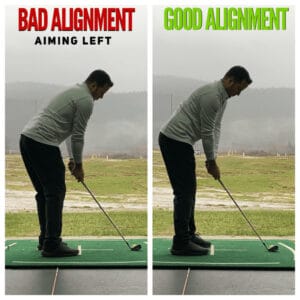
I believe this is one of the most fatal flaws of amateur golfers’ setups and is easily remedied by using alignment sticks for more guided range sessions.
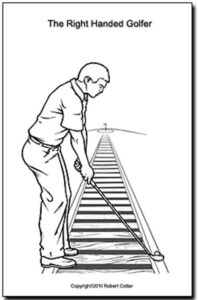
Place an alignment stick at your feet pointed toward your target, and imagine your feet, knees, and shoulders all in a straight line parallel to both your alignment marker and target.
This will give you enough space and flexibility in your hips to make a better turn/rotation in the backswing and help your swing back to the correct path.
Another helpful tip for proper alignment to stop slicing is to imagine train tracks leading to your target, with your feet on one side and your target line on the other.
Religiously checking your alignment will help you hit the ball straight more often, regardless of your skill level or how long you’ve been playing.
Tip #5: Check and Tweak Your Ball Position
Incorrect ball position is something most golfers think about last when it comes to creating a nasty slice, but it is a very easy fix.
When the ball gets too far back in our stance, it can lead to the club face not having enough time to square thoroughly at impact, causing a sliced golf shot with an often lower ball flight that works away from you and towards your dominant side.
To fix this, experiment with hitting shots with the ball position closer to your lead foot than usual but not too far forward at first.
Often golfers hear a piece of advice but don’t realize how small of changes they can make that lead to drastic results.
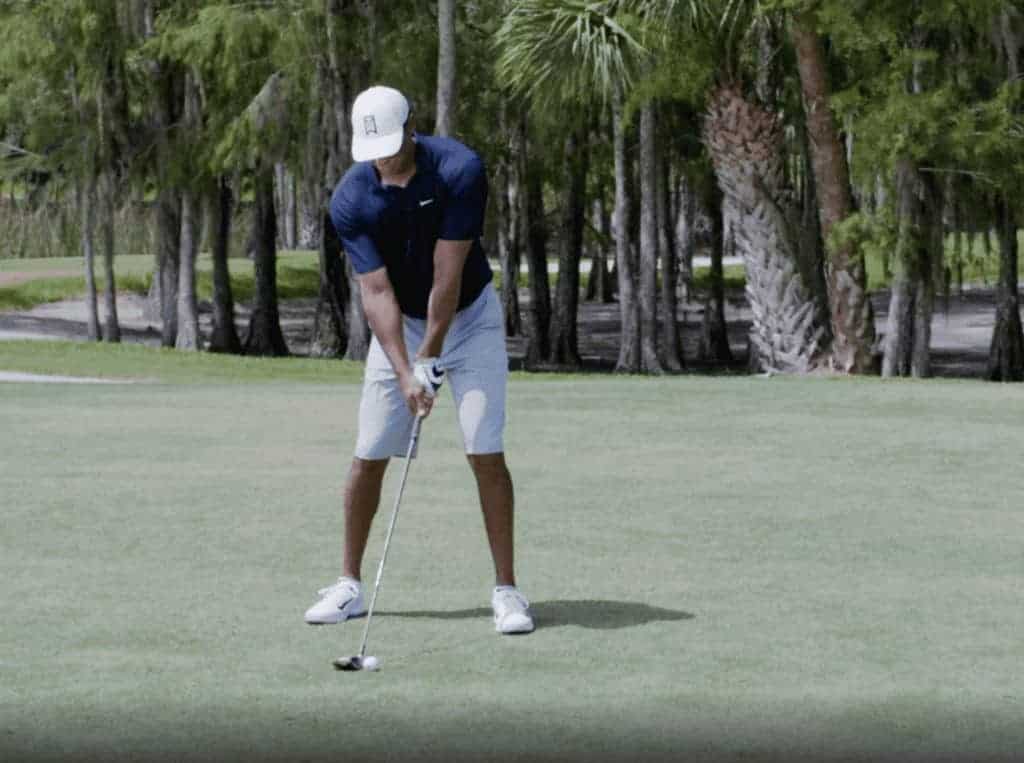
Begin by taking your standard setup and ball position and moving the ball 1/2 to 1 ball forward in relation to your stance. You’ll likely notice the ball positioned closer to your front foot will be higher in overall ball flight and hopefully straighter at the same time.
Tip #6: Watch Yourself on Camera For Regular Maintenance (Check Path, Alignment, Weight Transfer, etc.)
With the majority of new phones having a high-definition camera, it’s incredible how much we can learn from watching our swing on film, but how few people use this resource.
Free-to-use apps like the V1 Game App allow golfers to use tools like lines and arrows to compare their swings against top-level professional golfers and send these swings to instructors for advice.
By watching yourself from behind your golf swing (also known as the “Down the Line View”), you can check your swing path and alignment.
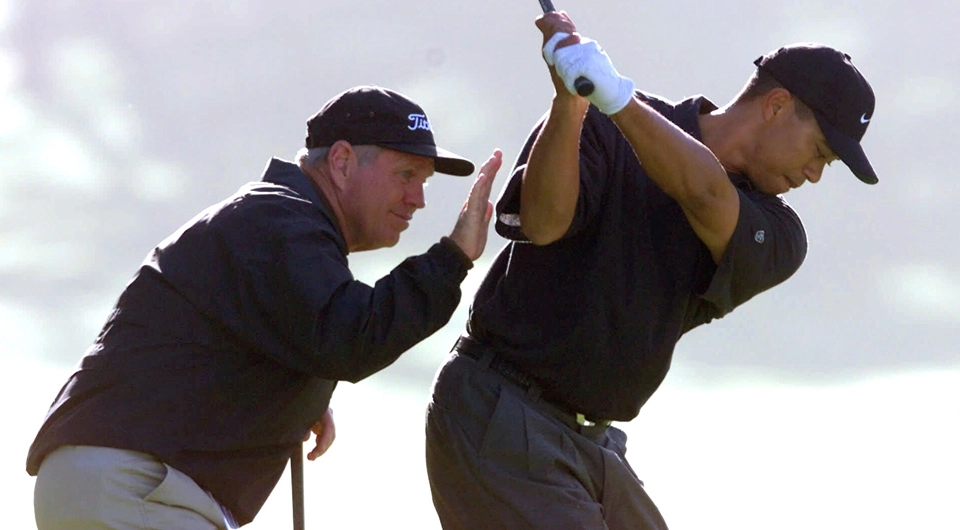
*BONUS TIP*
By watching yourself from the face-on angle (also known as the “Caddie View”), you can make sure your weight transfer is solid. Many people who slice in golf struggle with getting their weight moving toward the target and onto their front foot during the downswing, often hanging back on their backside and losing the ability to rotate.
If this sounds like a problem you might have, work on feeling your weight shift to your leading leg during and post-impact.
Bonus Tip #7: Experiment With These Tips on the Driving Range to Build Confidence

It’s much easier to experiment with introducing new swing thoughts at the driving range than the tee box of an actual score-keeping round.
Try all tips we’ve listed above at the range to learn what’s causing your slice and eventually work on forcing the ball in the opposite direction of your miss. Through enough trial and error, you’ll find a way to create a square clubface at attack and eliminate your slice.
When working on implementing a new swing feel, we like to make hundreds of reps in practice swings at half speed and full swings at the driving range before we ever take it to the golf course.
As an added bonus, here’s George Bryan IV getting a lesson from his father, George Bryan III, using their phone cameras and the V1 App we mentioned earlier! GBIII is one of the best golf instructors on the East Coast, and throughout this video, he drops tons of gems for amateurs to use to practice more efficiently on the driving range!
About The Author
Writers of Independent Golf Reviews
Independent Golf Reviews has tested and reviewed 1000+ golf products over the past 10 years. We use our experience and expertise to give golfers an unbiased insight on the market.
Read more…
Share
Receive the best golf discounts available exclusively for our subscribers and be auto entered into our monthly golf giveaways!
Success!⛳️
You are now an official member of IGR. Keep an eye out for the perks.
No spam, ever. 🔒

